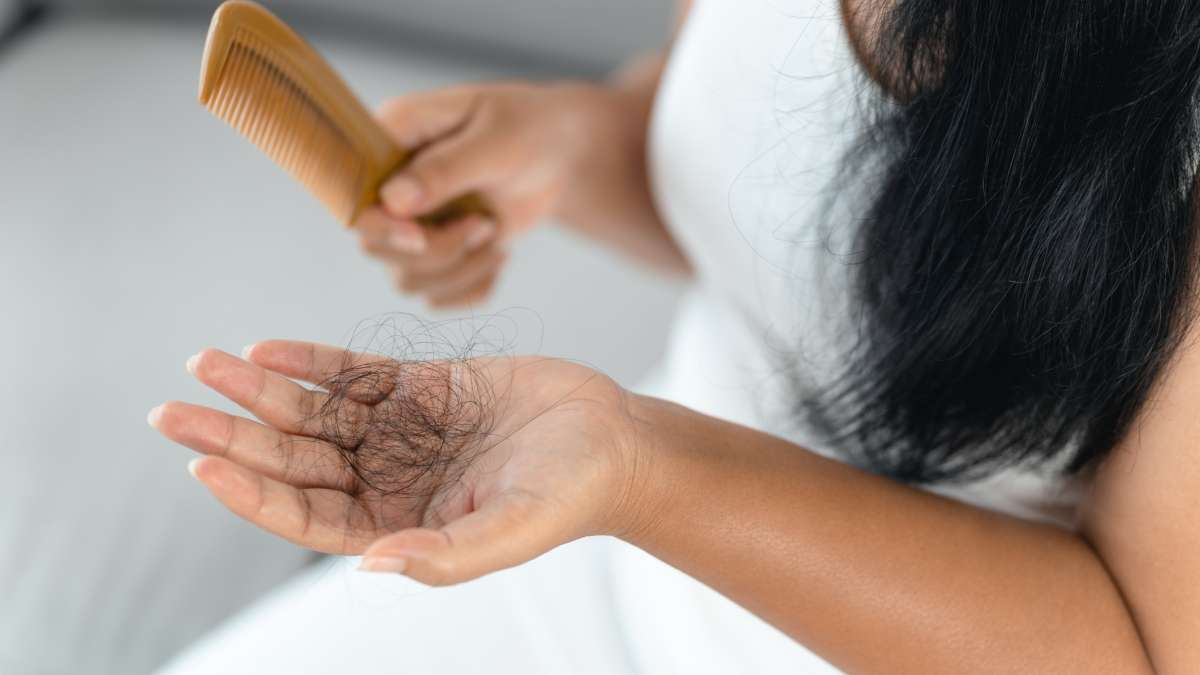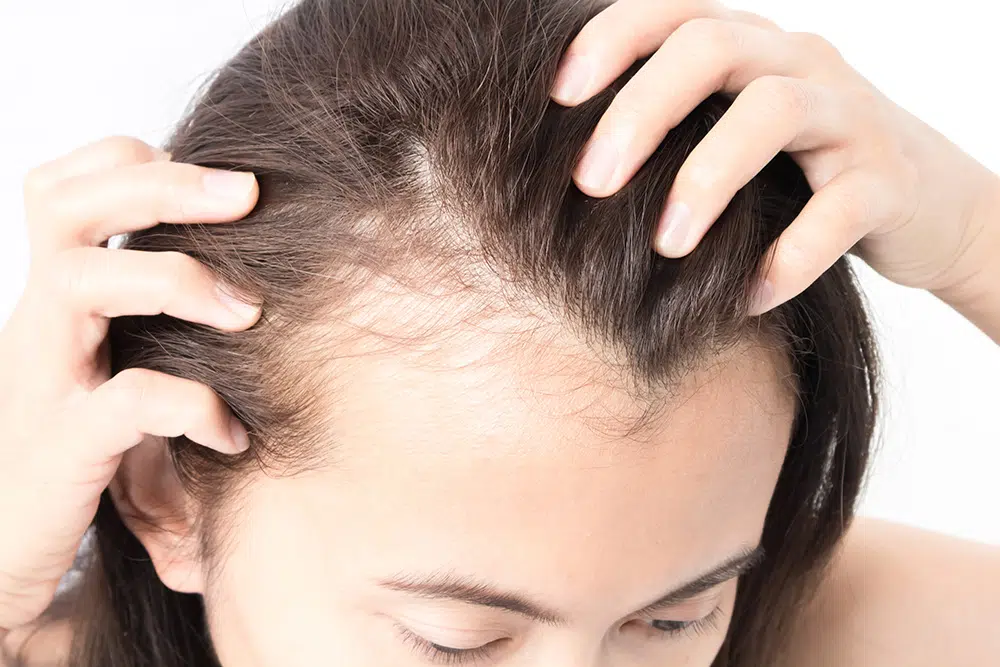Hair loss affects more than 50% of women at some point in their lives, making it far more common than many realize. While society often associates hair loss with men, women face unique challenges when dealing with thinning hair, from hormonal fluctuations to nutritional deficiencies. Understanding the root causes of female hair loss is crucial for effective treatment and prevention.
Whether you’re experiencing gradual thinning, sudden shedding, or pattern baldness, this comprehensive guide explores the primary causes of hair loss in women and evidence-based treatment options. From lifestyle modifications to medical interventions, we’ll examine practical solutions that can help restore your hair’s health and your confidence. Early intervention is key to successful treatment outcomes.
Understanding Female Hair Loss: The Basics
Female hair loss differs significantly from male pattern baldness in both appearance and progression. Women typically experience thinning rather than distinct bald spots, with hair loss often beginning around the center part and gradually spreading outward. The condition affects approximately 30 million women in the United States, with the most significant cause being female-pattern hair loss (FPHL).
Normal hair shedding involves losing 50 to 100 hairs daily, but hair loss becomes problematic when new hair doesn’t replace what has fallen out. Women may notice increased hair in their brush, shower drain, or visible scalp through thinning areas.
Primary Causes of Hair Loss in Women
Hormonal Changes and Medical Conditions
Hormonal fluctuations represent the leading cause of female hair loss. These changes occur during:
-
Pregnancy and childbirth: Hormonal shifts can cause temporary hair loss several months after delivery
-
Menopause: Declining estrogen levels cause hair follicles to shrink, leading to finer, shorter hair
-
Thyroid disorders: Both hyperthyroidism and hypothyroidism can trigger hair loss
-
Polycystic ovary syndrome (PCOS): Excess androgens can cause hair thinning at younger ages
Genetic Factors
Hereditary hair loss affects up to 30 million American women, typically manifesting in their 40s, 50s, or 60s. If either parent experiences hair loss, you may inherit the genes responsible for shrinking hair follicles.
Nutritional Deficiencies
Poor nutrition significantly impacts hair health. Key deficiencies include:
-
Iron deficiency: Essential for healthy hair growth
-
Vitamin D: Low levels linked to various forms of hair loss
-
Biotin and B vitamins: Critical for hair structure and growth
-
Protein: Insufficient intake can weaken hair follicles
Stress and Lifestyle Factors
Physical and emotional stress can trigger telogen effluvium, causing up to 300 hairs to fall out daily. Common stress-related causes include:
-
Severe illness or high fever
-
Crash dieting
-
Psychological stress and anxiety
-
Major life changes or trauma
Effective Treatment Options

Medical Treatments
Minoxidil (Rogaine) remains the FDA-approved gold standard for treating female pattern hair loss. Available in 2% and 5% solutions, it must be used consistently for at least six months to see results.
Prescription medications may include:
-
Spironolactone: Particularly effective for women with PCOS-related hair loss
-
Oral contraceptives: Help regulate hormones that contribute to hair thinning
-
Finasteride: Used off-label but not recommended for pregnant women
Advanced Therapies
Low-level laser therapy promotes cell growth and repair, showing promise for both male and female pattern baldness. Platelet-rich plasma (PRP) treatments use your own blood to stimulate hair follicles and promote regrowth.
Nutritional Support
Vitamin supplementation can address deficiencies contributing to hair loss:
-
Biotin: Supports hair structure and growth
-
Vitamin D: Essential for hair follicle health
-
Iron supplements: Particularly important for women with heavy menstrual cycles
-
Vitamin C: Aids iron absorption and collagen production
Lifestyle Changes for Hair Health
Dietary Modifications
A balanced diet rich in essential nutrients supports healthy hair growth. Include:
-
Lean proteins (meat, fish, eggs)
-
Leafy green vegetables
-
Nuts and seeds
-
Berries and citrus fruits
-
Whole grains
Hair Care Practices
Gentle hair care prevents additional damage:
-
Use mild, sulfate-free shampoos
-
Avoid tight hairstyles that pull on hair follicles
-
Limit heat styling tools and chemical treatments
-
Apply moisturizing conditioner after every wash
Stress Management
Stress reduction techniques can prevent stress-related hair loss:
-
Regular exercise to improve scalp circulation
-
Meditation and yoga practices
-
Adequate sleep (7-9 hours nightly)
-
Professional counseling when needed
Prevention Strategies
Early intervention provides the best outcomes for hair loss treatment. Regular scalp massage improves blood circulation while protecting hair from UV damage and environmental stressors helps maintain follicle health.
Avoiding smoking and limiting alcohol consumption supports hair health, as both habits have been linked to increased hair loss. Regular medical checkups can identify underlying conditions like thyroid disorders or hormonal imbalances before they significantly impact hair growth.
When to Seek Professional Help
Consult a dermatologist when you notice sudden or excessive hair loss, as early treatment is most effective. A professional evaluation can identify underlying medical conditions and determine the most appropriate treatment approach for your specific situation.

